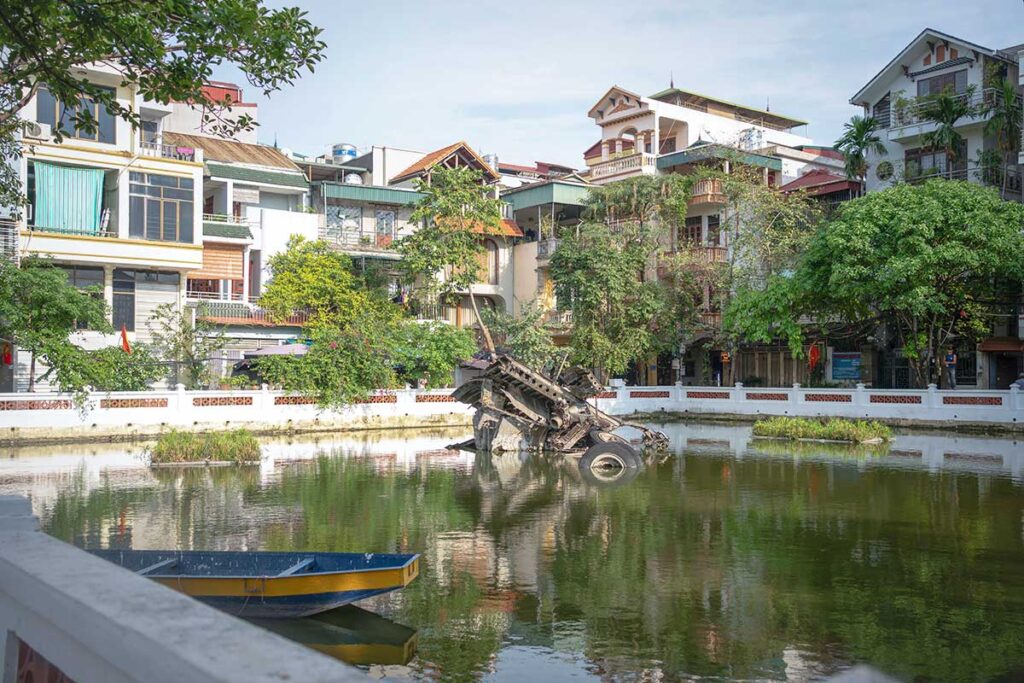What is B-52 Lake?
B-52 Lake, officially called Huu Tiep Lake, is a small lake located in Ngoc Ha Ward, Ba Dinh District of Hanoi. It gained the nickname “B-52 Lake” because part of an American B-52 bomber, shot down during the Vietnam War, still lies in its waters. In 1992, the site was recognized as a national historical vestige for its cultural and historical significance.
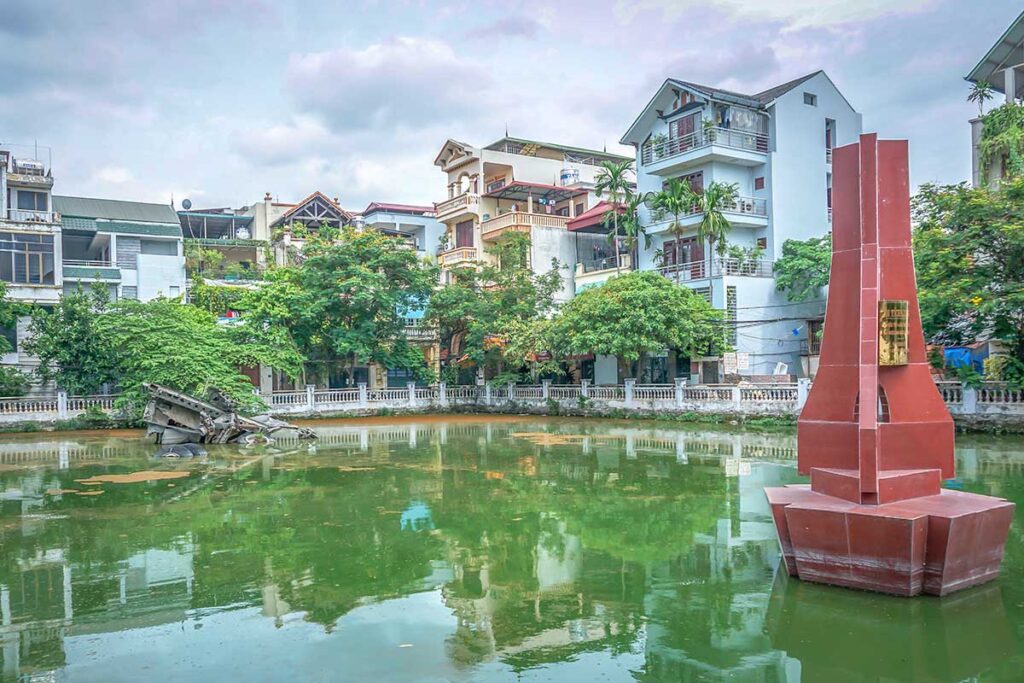
History of the downed B-52
In December 1972, the U.S. launched Operation Linebacker II, a massive bombing campaign aimed at forcing North Vietnam back to the negotiating table. Known locally as the “Hanoi-Dien Bien Phu in the Air,” these 12 days of air raids brought heavy destruction to the city. On the night of December 27, one of the B-52 Stratofortresses was hit by Vietnamese anti-aircraft missiles and crashed into what is now Huu Tiep Lake.
Eyewitnesses recall the scene vividly: the bomber was struck before it had dropped its payload, and dozens of bombs were later recovered from the wreckage. Some bombs had sunk deep into the ground, while others lay scattered on the roads, requiring a week-long military operation to make the area safe. Locals describe the sky lit by flames and the whole neighborhood staying awake that night, unsure what would happen next.
The remains of the aircraft became more than just wreckage — they turned into a symbol of resilience and victory. Only weeks later, in January 1973, the Paris Peace Accords were signed, effectively ending U.S. involvement in the war. The site has since been preserved as a historical relic, with renovations in 2012 and again in 2021–2022 to clean the lake, reinforce the embankments, and prepare for the 50th anniversary of the campaign.
Highlights of visiting B-52 Lake
1. The wreckage in the water
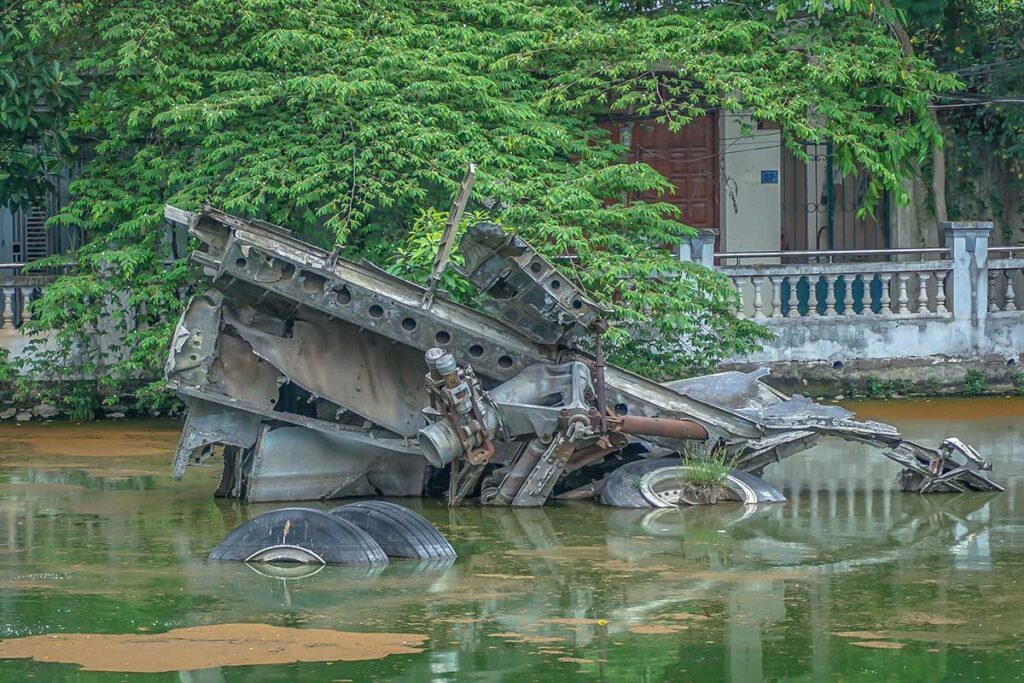
What draws people here is the twisted metal of the B-52 bomber still sticking out of the lake. It’s not a full plane, but broken fuselage parts, rusted and mossy after decades in the water. The remains are fenced off for preservation, yet clearly visible from the shore. For many visitors, the wreck isn’t visually dramatic but it carries symbolic weight — a piece of war history left where it fell.
2. Local neighborhood atmosphere
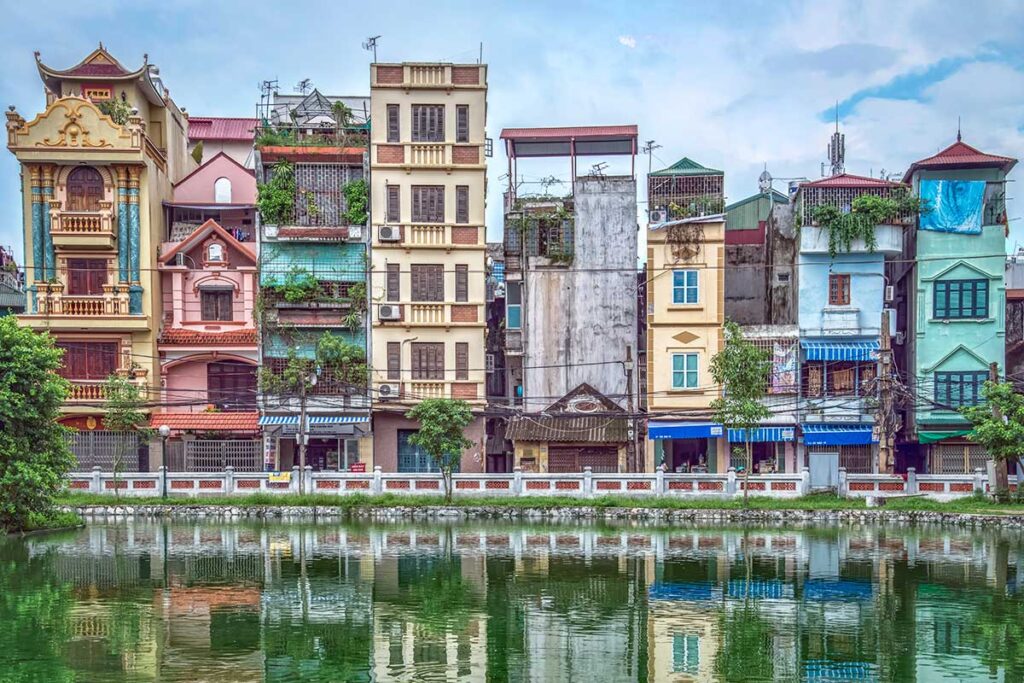
Unlike Hanoi’s bigger landmarks, B-52 Lake sits in the middle of a quiet residential area. Getting there means walking through narrow alleys, past small grocery shops, scooters parked outside homes, and locals going about daily life. You’ll often see children fishing in the lake or older residents sitting nearby for fresh air. This mix of ordinary daily life with a war relic in the background is what makes the visit feel unique.
3. Coffee by the Lake
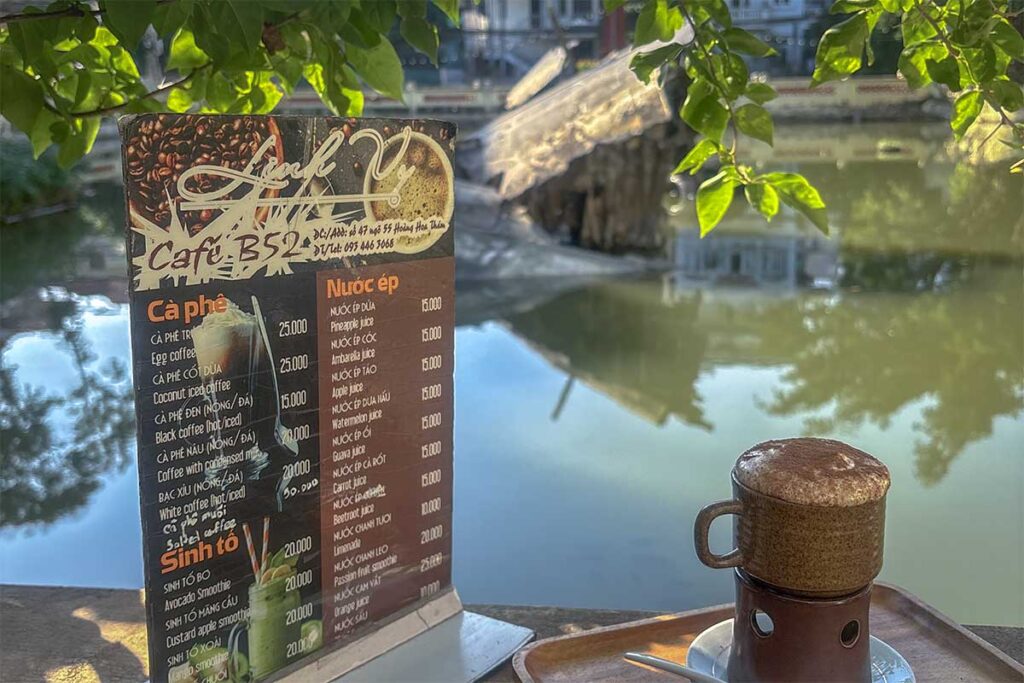
There is a small café right next to the water where you can sit with a Vietnamese coffee and look across at the wreckage. It’s simple, not a tourist attraction in itself, but it offers a rare chance to pause and take in the view without rushing. For many visitors, this café stop becomes the most memorable part of their visit.
B-52 Victory Museum (Nearby)
Just a short walk from the lake (about 10–15 minutes on Doi Can Street) you’ll find the B-52 Victory Museum, which puts the wreckage in a wider context. The museum is free to enter and has both indoor and outdoor displays, including anti-aircraft missiles, radar equipment, and large pieces of downed U.S. planes.
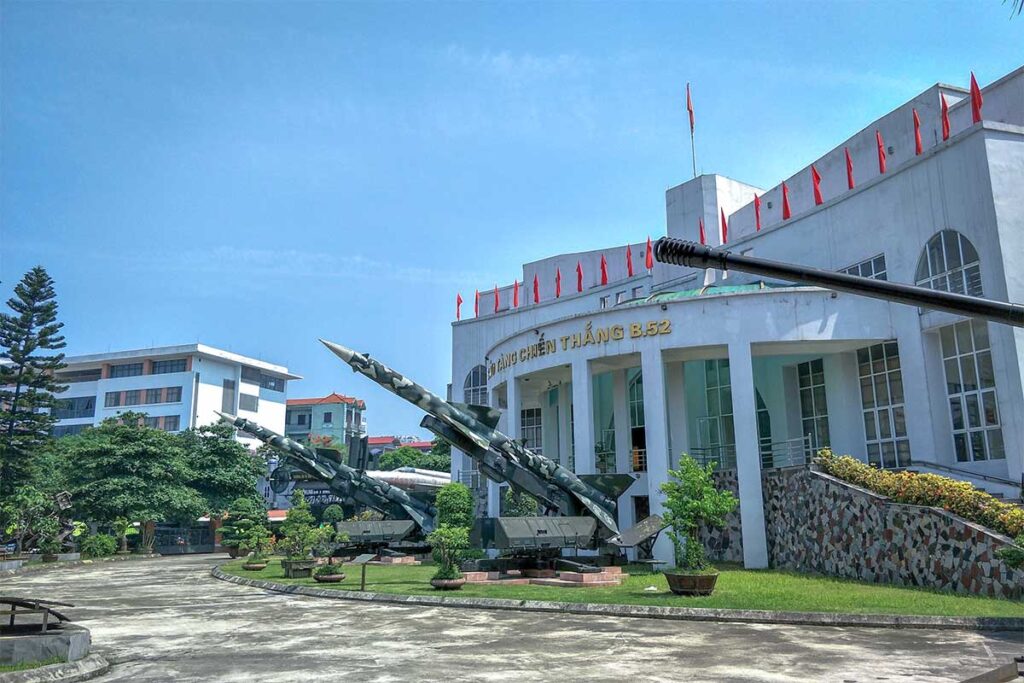
It’s an interesting stop if you’re already in the area, though quite modest by international museum standards. Most visitors spend 20–40 minutes here. Outdoor exhibits are the most striking, while the indoor sections include dioramas and photos but less detailed explanations in English.
The museum pairs naturally with a visit to B-52 Lake: see the wreckage where it fell, then walk to the museum to learn about Hanoi’s air defense campaign during the war. For more details, you can check our dedicated guide to the B-52 Victory Museum.
Tip: For a deeper look at Vietnam’s wars, head to the larger Vietnam Military History Museum instead.
How to get there
Location
B-52 Lake is in Ngoc Ha Ward, about 1–1.5 km west of Ba Dinh Square. It’s tucked inside a residential neighborhood, so don’t expect big tourist signs pointing the way.
Grab, Taxi, or Motorbike
The easiest way to get there is by Grab car or taxi, which can drop you near the entrance of the small alleys leading to the lake. If you’re already exploring Ba Dinh, you can also walk — it takes 15–20 minutes from major landmarks like the Ho Chi Minh Mausoleum. Motorbikes are another option, but the narrow lanes around the lake mean you’ll likely park and walk the last stretch.
Navigation tips
On Google Maps, search for “Hồ B52” rather than just “B-52 Lake.” The site is hidden in backstreets, and many first-time visitors say it feels a bit like finding a secret corner of Hanoi. If you’re coming from the B-52 Victory Museum, there are signs in the alleys that help guide the way.
Nearby sights to combine with
Since the lake itself is a short stop, it makes sense to combine it with nearby attractions. Within a 1–2 km radius you’ll find Ho Chi Minh Mausoleum, One Pillar Pagoda, the Presidential Palace, and the Temple of Literature. West Lake is also close by if you want to extend your walk with something more scenic.
Is B-52 Lake worth visiting?
B-52 Lake is a very small site — most visitors spend no more than 5–15 minutes here. What you see is limited to a section of wreckage in the water, and while it’s unique, it isn’t visually impressive. The value lies more in its symbolism and the quiet neighborhood setting than in the sight itself.
It’s worth stopping by if you’re already in Ba Dinh District visiting places like the Ho Chi Minh Mausoleum, West Lake, or the B-52 Victory Museum. But it’s not the kind of landmark you’d cross the city for on its own. Think of it as a meaningful side stop rather than a standalone attraction.
